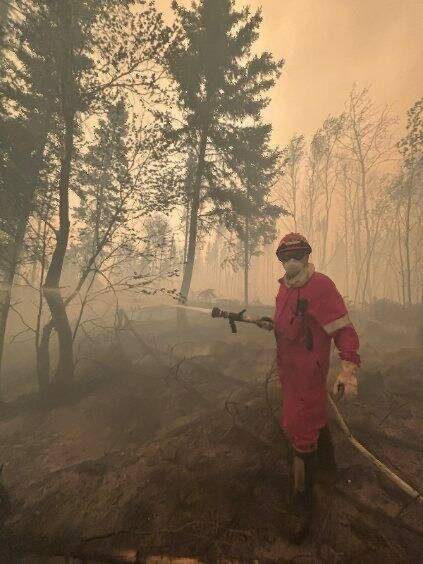Insured damage from Manitoba, Saskatchewan wildfires nears $300M
Advertisement
Read this article for free:
or
Already have an account? Log in here »
To continue reading, please subscribe:
Monthly Digital Subscription
$1 per week for 24 weeks*
- Enjoy unlimited reading on winnipegfreepress.com
- Read the E-Edition, our digital replica newspaper
- Access News Break, our award-winning app
- Play interactive puzzles
*Billed as $4.00 plus GST every four weeks. After 24 weeks, price increases to the regular rate of $19.00 plus GST every four weeks. Offer available to new and qualified returning subscribers only. Cancel any time.
Monthly Digital Subscription
$4.75/week*
- Enjoy unlimited reading on winnipegfreepress.com
- Read the E-Edition, our digital replica newspaper
- Access News Break, our award-winning app
- Play interactive puzzles
*Billed as $19 plus GST every four weeks. Cancel any time.
To continue reading, please subscribe:
Add Winnipeg Free Press access to your Brandon Sun subscription for only
$1 for the first 4 weeks*
*$1 will be added to your next bill. After your 4 weeks access is complete your rate will increase by $0.00 a X percent off the regular rate.
Read unlimited articles for free today:
or
Already have an account? Log in here »
Insured losses from wildfires surrounding Flin Flon and in La Ronge, Sask., have been pegged at nearly $300 million by an independent catastrophe insurance provider.
The estimates by Catastrophe Indices and Quantification Inc. were released Thursday in a statement by the Insurance Bureau of Canada, which argued that amid increases in extreme weather and heightened wildfire risks, investments must be made to make homes, businesses and communities more resilient.
The bureau, which is an nationwide industry association for private home, auto and business insurers, noted “prolonged dry and warm conditions” across much of Manitoba and Saskatchewan this spring and summer led to volatile conditions.

Fire crews in Flin Flon on June 5. (Province of Manitoba)
The new estimates pegged the insured losses of what the bureau referred to as the Flin Flon Wildfire Complex at $249 million. The statement said this was created when number of out-of-control fires converged into one, from north of Snow Lake to Pelican Narrows in Saskatchewan, and noted the worst damage from this group of fires occurred in Denare Beach, Sask. Nearly 40,000 people were evacuated from the areas.
The “Pisew wildfire,” which impacted the communities of La Ronge, Hall Lake and Air Ronge in Saskatchewan, among others, caused more than $50 million in insured damage, the statement said.
“These events are yet another example of the growing frequency and cost of extreme weather in Canada. As disasters such as these continue to grow, they are placing pressure on insurance premiums from coast to coast,” said Aaron Sutherland, the bureau’s vice-president for the pacific and western regions, in the statement.
The statement called on all levels of government to prioritize several measures, including: creating “more stringent building code standards;” supporting communities in developing wildfire preparedness plans; offering incentives, such as rebates and retrofit programs, for homeowners and businesses to increase their resilience; and focusing on “nature-based solutions” for fire prevention, such as controlled burns and agricultural practices like green firebreaks and targeted grazing.
In addition, the bureau argued that governments must help Canadians recover faster after natural catastrophes by providing dedicated funding to support “timely and resilient” rebuilding efforts.
The most recent wildfire bulletin from the province, sent Aug. 21, noted there were 149 active wildfires across Manitoba and 417 to date, well above the average of 338 fires for this time of year.

